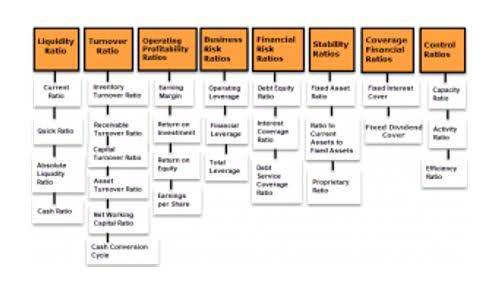
Assets in the balance sheet should show the acquiring cost unless otherwise stated. Under the cost concept of accounting, all the assets are recorded at the original cost irrespective of market value. This concept is also known as the Cost Principle or Historical Cost Concept. This concept focuses on objectivity and reliability in financial reporting, as the historical cost is verifiable and less subject to estimation.
102 Fixed-price contracts.

Historical cost accounting also plays an essential role in managing and reporting asset impairments – significant events that may require companies to reevaluate the carrying value of certain assets on their balance sheets. Unlike other valuation methods that take into account market fluctuations or changes in economic conditions, the Cost Principle remains stable. This stability ensures that financial statements provide a consistent representation of the assets and financial position of a company, regardless of external factors. This allows for meaningful comparisons of financial statements across different periods, facilitating trend analysis and the assessment of a company’s financial performance. The application of the cost principle in asset valuation extends beyond mere bookkeeping; it plays a significant role in strategic decision-making and financial planning.
Helps ensure compliance with accounting standards – Advantages of Historical Cost Principle
Additionally, it is a widely accepted principle in accounting standards, including Generally Accepted Accounting Principles (GAAP) and International Financial Reporting Standards (IFRS). In conclusion, understanding both the advantages and limitations of historical cost accounting is crucial when evaluating a company’s financial statements. A balanced approach that incorporates elements of both historical cost and fair value accounting can help ensure more transparent and informative financial reporting for stakeholders. In conclusion, understanding the distinction between historical cost and fair market value is crucial cash flow for accurately accounting for long-term assets. While some assets may require revaluation or impairment adjustments to reflect their current value, historical cost remains the primary method for recording most fixed assets on a balance sheet. This approach ensures that financial statements present consistent and comparable information for investors and stakeholders alike.
What is the Historical Cost Principle?
Understanding this important principle can provide valuable insights into accounting practices and help investors make informed decisions. The Cost Principle is a critical accounting convention that ensures businesses record their assets and liabilities accurately. It provides a reliable basis for financial reporting, enabling investors, creditors, and other stakeholders to make informed decisions. By following the Cost Principle, businesses can avoid overstatement of assets and income, accurately calculate depreciation and impairment, and provide a truthful representation of their financial position. Moreover, the cost principle can impact the depreciation expense reported on financial statements. Since depreciation is calculated based on the historical cost of an asset, the expense recognized each period may not accurately reflect the asset’s current usage or market conditions.
205-16 Gains and losses on disposition or impairment of depreciable property or other capital assets.

With GAAP, presenting a the cost principle is used company’s finances to outside entities (such as banks) becomes easier and more manageable. While GAAP is not required for all organizations, you may want to consider using these principles when preparing your financial statements. Rather than changing entries in accounting records to reflect the new market value, the difference in price should be credited to an equity account called ‘revaluation surplus’.
Fundamental Analysis: Principles, Types, and How to Use It
The acquisition was made 15 years ago; however, in the current market, the building is worth over $12,000,000. These principles are for cost determination and are not intended to identify the circumstances or dictate the extent of Federal and State or local participation in financing a particular contract. Cost input means the cost, except general and administrative (G&A) expenses, which https://www.dacapo.fr/oregon-department-of-revenue-what-form-do-i-use/ for contract costing purposes is allocable to the production of goods and services during a cost accounting period.
- When a company sells an asset acquired at a different cost than its current value, the gain or loss on the sale is recognized for tax purposes.
- Historical cost accounting, as previously mentioned, records assets at their original purchase price.
- GAAP, also known as US GAAP, is a set of commonly followed accounting rules and standards for financial reporting.
- By recording assets at their original cost, the principle provides a clear audit trail and facilitates the traceability of transactions.
- In these instances, fixed assets like property, plant, and equipment can be revalued to reflect the current fair market value, which may differ significantly from their original historical cost.
The principle states that an asset should be recorded at the price paid to acquire it, and that a liability should be recorded at the amount owed to settle it. This principle is based on the belief that the cost of an item is the most objective and verifiable measure of its value. Furthermore, the cost principle’s emphasis on verifiable data enhances transparency and accountability in financial reporting. By recording assets at their original purchase price, companies can provide stakeholders with a clear and consistent view of their financial position, reducing the risk of misinterpretation or manipulation. This transparency is crucial for maintaining investor confidence and meeting regulatory requirements, particularly in sectors where accurate asset valuation is essential for compliance and risk management.
- Historical cost plays a crucial role in the context of the conservatism principle – an essential accounting tenet that requires reporting entities to exercise prudence when creating financial statements.
- Today, it continues to be used by businesses worldwide and is essential to financial reporting and taxation.
- Cost, revenue, matching, and disclosure are the four basic principles of generally accepted accounting principles.
- The main principle behind accrual accounting is the matching principle, which aims to accurately match the revenues and expenses that are related to a specific period.
- By doing so, they can ensure that their financial statements accurately reflect their true financial position and help them make informed business decisions.
- One of the biggest drawbacks of cost accounting is that it ignores established long-term pricing trends for many large assets, including real estate.
Provides a reliable and objective basis for accounting – Advantages of Historical Cost Principle

This is particularly relevant for long-term assets, such as property, plant, and equipment, which may have appreciated over time. By adhering to the Cost Principle, financial statements accurately reflect the value of the assets at the time of acquisition, providing a reliable basis for decision-making. The cost principle, also known as the historical cost principle, is an accounting principle that states that assets and liabilities should be recorded at their original cost. This means that when a company purchases an asset, such as a piece of equipment or real estate, it records the asset on its balance sheet at the purchase price. The historical cost principle is a widely used accounting convention for valuing property, plant, and equipment.
